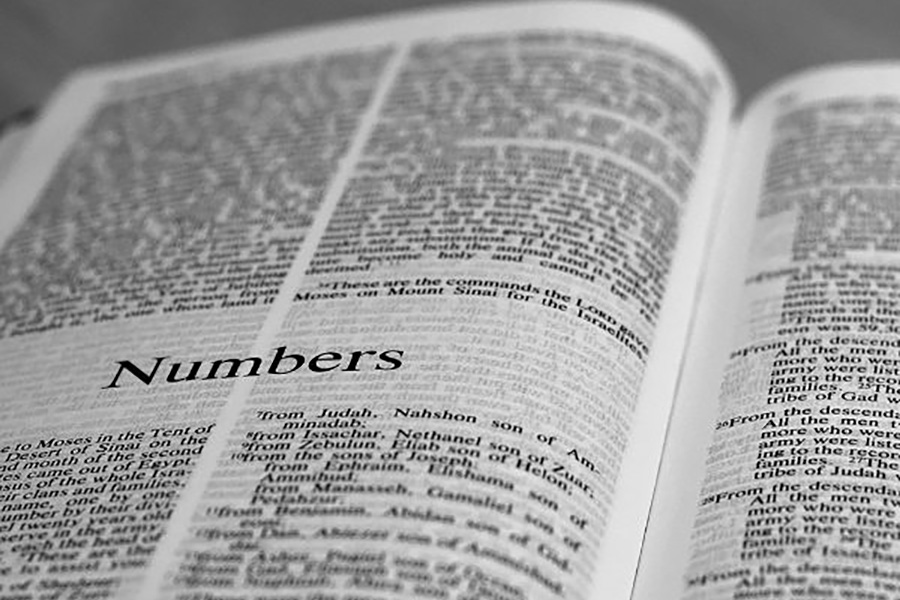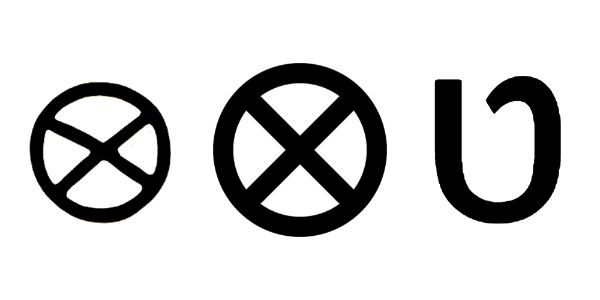The compound word BaMadabar (𐤁𐤌𐤃𐤁𐤓) or “Numbers” has a long and complex history; its final form is possibly due to a Priestly redaction (i.e., editing) of a Yahwistic source made some time in the early Persian / 𐤐𐤓𐤎𐤉 (Pharasay) period in 5th century BCE (3425 AM ― 34525 A.M.). The name of the book comes from the two censuses taken of the 𐤉𐤔𐤓𐤀𐤋𐤉𐤌 (Yasharaalayam).
The word combines Ābarayat Letter #2 𐤁 (bayat) meaning “house”, “family”, or “in” and 𐤌𐤃𐤁𐤓 (madabar) meaning “the desert”. Also, it combines Ābarayat Letter #2 𐤁 (bayat) meaning “house”, “family”, or “in” and Ābarayat Letter #13 𐤌 (mayam) meaning “water”, “chaos”, “of”, “from”, “for”, and the word 𐤃𐤁𐤓 (dabar) meaning “speak”.
The Paleo-Hebrew language or the original language of the Ābarayam is one spoken with an emphasis on the rauakh (breath, wind, spirit). With the language of the Ābarayam, each letter has a meaning and a number associated with it that adds meaning to each word they’re used with. Below you will be able to learn more about the letter in Ancient Hebrew, Yiddish Hebrew, Greek, and much more.
Letter Meanings
| Letter | Meaning |
|---|---|
| 𐤁 (b) – ba | House, family, “in” Prefix: Converts a word into “Family of” or “in…”, “at…” “with…” |
| 𐤌 (m) – ma | water, chaos, mighty, liquid, massive, sea, blemish Prefix: from, of, from inside, than, more than, without, because of, due to, for |
| 𐤃 (d) – da | Tent door, pathway |
| 𐤁 (b) – ba | House, family, “in” |
| 𐤓 (r) – ra | Head and person, man, beginning, top, rule, inheritance, possession |
| Ābarayat Number | 248 = 2 (b) + 40 (m) + 4 (d) + 2 (b) + 200 (r) |
| Hebrew Gematria | |
| English Gematria | |
| Simple Gematria |
Based on the meaning of the letters the word could be defined as:
- “family of mighty pathway in possession”
- “in a multitude a pathway of family beginning”
- “Family of water speak”
- “Family of chaos speak”
- “Family of mighty speak”
- “In From Speak”
- Combines B and Madabar
- Combines B and M and Dabar
Definitions for 𐤁𐤌𐤃𐤁𐤓 / BaMadabar
| Language | Word | Transliteration | Pronunciation | Definition |
|---|---|---|---|---|
| Ābarayat | 𐤁𐤌𐤃𐤁𐤓 | BaMadabar | ba-mada-bar | “In the Desert”, Numbers |
| English | Numbers | Numbers | nuhm-berz | the fourth book of the Old Testament. |
| Hebrew | בְּמִדְבָּר | Bamidbar | ba-mid-bawr’ | “In the Desert”, Numbers |
| Arabic | في الصحراء | fi alsahra’ | fi-sah-ra’ | “In the Desert” |
| Greek | ἔρημος | erémos | er’-ay-mos | solitary, desolate, deserted, waste, abandoned. |
Images for 𐤁𐤌𐤃𐤁𐤓 / BaMadabar


Definitions for /
When adding the 𐤉 (yad) to the end of a word, it creates a possessive of the original word. It can either signify “my…” or identify a member of a nation. For example, 𐤏𐤁𐤓 (Ābar) is the progenitor, but 𐤏𐤁𐤓𐤉 (Ābaray) is the singular descendant of him also known as a Hebrew.
| Language | Word | Transliteration | Pronunciation | Definition |
|---|---|---|---|---|
| Ābarayat | ||||
| English | ||||
| Hebrew | ||||
| Arabic | ||||
| Greek |
Images for /


Definitions for /
When adding the 𐤌 (mayam) after the 𐤉 (yad) to the end of a word, it creates a plural of the original word. It can identify multiple members of a nation. For example, 𐤏𐤁𐤓 (Ābar) is the progenitor, but 𐤏𐤁𐤓𐤉𐤌 (Ābarayam) are the plural descendants of him also known as Hebrews.
| Language | Word | Transliteration | Pronunciation | Definition |
|---|---|---|---|---|
| Ābarayat | ||||
| English | ||||
| Hebrew | ||||
| Arabic | ||||
| Greek |
Images for /


Definitions for /
When adding the 𐤕 (tau) after the 𐤉 (yad) to the end of a word, it creates a plural of the original word. It identifies the language or a sign of a nation’s existence. For example, 𐤏𐤁𐤓 (Ābar) is the progenitor, but 𐤏𐤁𐤓𐤉𐤕 (Ābarayat) is the language of him also known as Paleo-Hebrew language.
| Language | Word | Transliteration | Pronunciation | Definition |
|---|---|---|---|---|
| Ābarayat | ||||
| English | ||||
| Hebrew | ||||
| Arabic | ||||
| Greek |
Images for /


Classification
You can continue your studies of the words by viewing Strong’s entries for:




